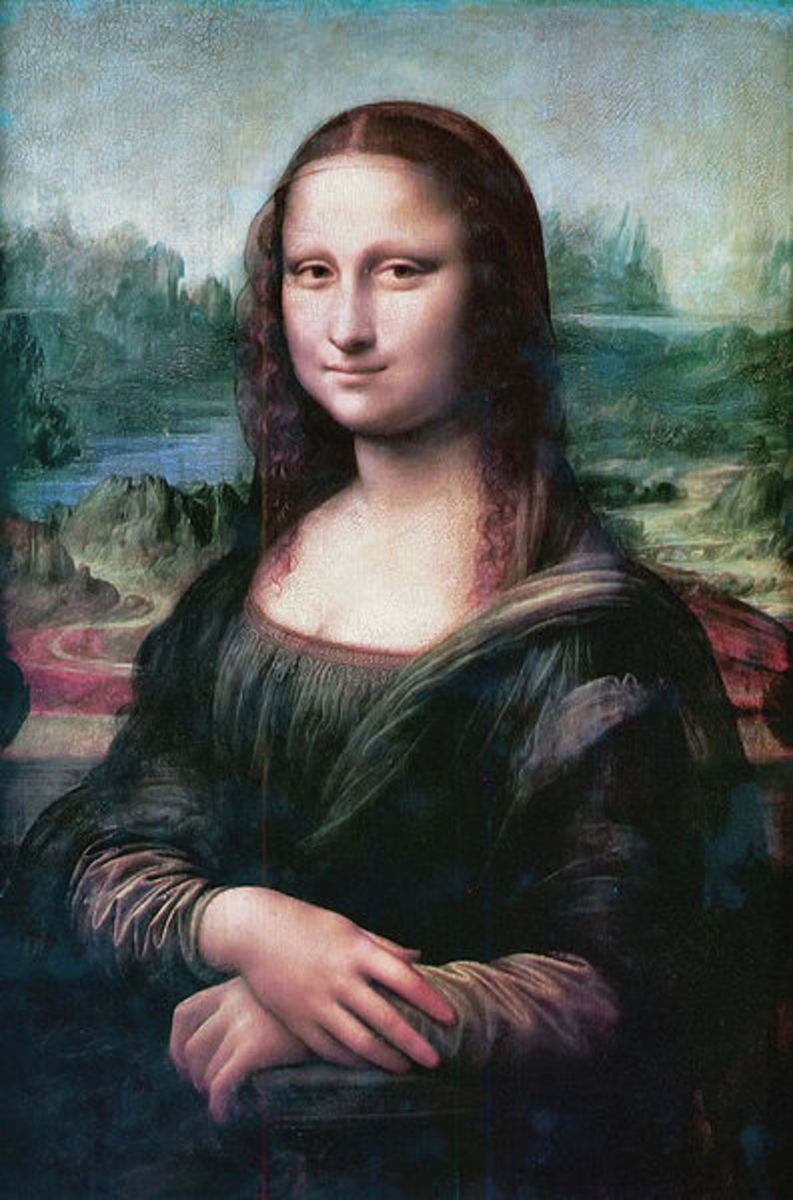"The Art Forger" by B.A. Shapiro
"The Art Forger" by B.A. Shapiro
This review will have spoilers.
By the way, I wanted this first article to look good, so I read this out loud to other people.
Obviously, The Art Forger delves into, of course, forgery and why people take part in such an act. However, B.A. Shapiro adds more to her story than just characters creating fake art. To elaborate, the author uses the Isabella Stewart Gardner Museum heist as a springboard for some juicy alternate history.
In the book, artist Claire Roth tries (and fails) to crawl out of a damaged reputation courtesy of a controversy involving her and her fellow artist/former lover Isaac Cullion. While in this vulnerable state, a wealthy art world mover and shaker named Aiden Markel asks Roth to create a fake version of an (then stolen, but he now owns) Edgar Degas rendering of three women. Wanting to recover financially, Roth takes part in his scheme. However, in the middle of creating the forgery, she ends up investigating unearthed history involving Isabella Stewart Gardner's personal life.
As Roth falls into Markel's plot (and him in the process), the book (in chapters) has fictional letters written by Gardner herself. Shapiro writes her as a charmer who collected art and conversed with various artists, such as Degas. However, Gardner does have some negative traits. In the correspondences with her niece Amelia, she constantly manipulates people, from telling Degas to not paint in the Impressionist style to arranging her niece's marriage. Actions that will have long term consequences.
Pacing wise, Shapiro does an amazing job gradually peeling away the mysteries she sets up at the beginning of the book. I felt drawn in and tantalized with her plot reveals as the book jumped between the present (Roth) and the past (Gardner). For example, when unfolding the tragic subplot of Cullion and Roth's dissolving relationship, Shapiro draws it out over multiple chapters and ends it with a heartbreaking conclusion.
As this book revolves around art history, the art world, and forgeries, how does it hold up? Pretty good, in my opinion. While Roth goes through the painstaking ritual of forging her Degas, I felt heady and buzzed from reading text filled with forgery terminology and equipment. Not to mention Roth's admiration and knowledge of Degas as she poured over details of his life and work, something that serves her well in the novel. Plus, what kind of art history centric fiction would be without name dropping other artists? Whether in the Mandarin Hotel or in the homes of Markel and Sandra Stoneham, a surviving ancestor of Gardner (and important to the story), Shapiro references huge collections of mostly Modern and Contemporary artists. As this plot revolves around forgery, the book dives into the world of famous forgers and rumors of possible fakes.
Even the dialogue in a story of characters deep in the Boston/New York art world felt natural with their use of slang words such as the derogatory term OTC (Over the Couch). Reading that, I wondered if the author saw John Logan's Red. Shapiro even gives Degas a unique personality with his quick wit and easygoing but inquisitive nature. When Gardner wrote of how the artist took her apart with his gaze, I also wondered if Shapiro knew of the song Color and Light from Sunday in the Park with George.
While enjoyable, I did have some problems with the book. Irritation came over me at Gardner's dislike of Degas' Impressionist art. Her hatred of the style and her plea to the artist to make an Old Master painting came off as so theatrical, I ended up typing in my notes: "Here's an idea, Gardner. Pay him."
While Gardner irritated me, I grew to dislike Roth immensely. At the beginning, I had sympathy for Roth and her troubles. As the book headed towards the finale, the writing went out of its way to demonize characters who did not love Roth in such over the top ways, I couldn't help but feel sorry for them. To clarify, when the scheme falls apart and Roth's caught and arrested, Shapiro depicts some characters who process her arraignment in such an unflattering light, I had feelings of disgust at her petty descriptions. I guess years of reading Ana Mardoll's blog and the Slacktivist deconstruction of Left Behind has colored my look at protagonists and how they treat supporting characters (Go the link list for their websites).
The biggest example of this problem comes from Roth and her disdain of one artist named Crystal Mack. It didn't bother me at the beginning of the book when Roth and her friends took apart Mack, but as I finished, I ended up angry. Why do they hate her? Because Roth (and company) considered her lacking in talent and having no originality whatsoever. Given that Shapiro did not describe Mack's work very well in the book, I found it hard for me to join their distaste. To make things worse, even after surviving Markel's scheme and gaining fame and fortune at the end of the book, Roth still treated this woman with disdain. You'd think perspective would cause the hate to fade, but no. The more I took apart Roth's hatred, the more I ended up sympathizing with Mack. She did not do anything wrong to Roth other than receiving fame for her art and commenting that a Cullion painting depicting a nude Roth sold handsomely due to the infamy. While the book keeps Mack's backstory unknown, I'm sure she's smarter than Roth, who twice gets involved with men who use her.
To Shapiro's credit, I'm glad she broke up Roth and Markel at the end of the story. Despite my problems with Roth, I did not like the idea of her keeping a relationship with someone who takes advantage of vulnerable people.
Beyond protagonists becoming unappealing, there were other issues in the story that kept me from elevating the art world depiction from "pretty good". When Isaac Cullion's painting brings instant fame, I did feel surprise at the lack of backlash against him. When praise and immense popularity comes fast to a person, backlash usually follows. The book should have had mentions of critics with reputations for contrary points of view dismissing Cullion as being "overrated" or "overexposed". Roth did have supporters, but not enough to prevent her from falling into Markel's clutches.
Despite my complaints, I kind of want a sequel to this book. I'm curious about the mysterious organization that gave Markel the Degas painting, for beyond their nasty reputation, Shapiro never reveals their true identities. I want a sequel where Markel leaves prison out of good behavior and finds himself entangled once more in this group. Also, I want Roth to turn into an investigator on art forgery.
ETA: I decided to rewrite a sentence because I didn't like it. To clarify, reading the Left Behind blog series also taught me how to understand "Show, don't tell" in writing. For example, I originally wrote about how the book doesn't give examples of Crystal Mack's work (I rewrote that sentence). There I took inspiration from Fred Clark (the author of the blog series) who wrote how you can describe art as much as you want without providing real examples. Shapiro didn't even do that.
I recommend reading this book.
The Isabella Stewart Gardner Museum
- Isabella Stewart Gardner Museum : Home
The official website of the museum.
For those curious about any updates on the heist.
- F.B.I. Says It Has Clues in ’90 Boston Art Heist - NYTimes.com
The bureau said it believed it had figured out who pulled off a famous theft of 13 works of art, valued at up to $500 million, from Boston’s Isabella Stewart Gardner Museum.
For those who want a summary and errors found in the book.
- ‘The Art Forge,’ by B. A. Shapiro - NYTimes.com
This novel's heroine gets entangled in the world of art forgery.
Other Reviews
- The Art Forger, by B.A. Shapiro | Michael Magras's blog
I was waiting to board a flight to London from Boston’s Logan Airport in March 1990 when I heard the news: Thieves dressed as police officers had broken into the Isabella Stewart Gardner Museum in the Fenway and stolen thirteen works of art, includin
Other Reviews to read.
- ARCAblog: B. A. Shapiro invents a fifth version of Degas' "After the Bath" in the book "The Art Forg
ETA: It has links to other reviews that I found in my research.
- Ana Mardoll's Ramblings: index
To deconstructions of literature, movies, tv, et cetera.
- Left Behind
A deconstruction of the Left Behind series.
Corrections
10-5-2015 Fixed my title.
3/27/2020 Removed B.A. Shapiro's official website due to its status as "dead".
© 2014 Catherine







